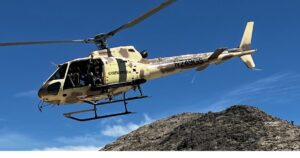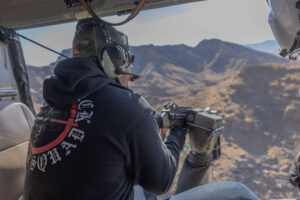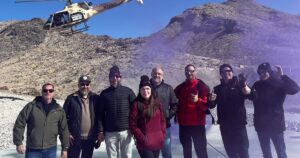Aerial shooting offers a unique perspective and breathtaking visuals that can elevate any film or photography project. However, preparing for your aerial shooting experience involves more than just packing your camera. It requires careful planning, safety considerations, understanding of drone technology, and knowledge of the legalities involved. This guide will provide you with a comprehensive overview of the steps you need to take to ensure a successful and safe aerial shooting experience. From choosing the right equipment to understanding the rules of aerial photography, we will cover everything you need to know to capture stunning aerial shots.
Top 10 Tips to Prepare for Your Aerial Shooting Experience
Aerial shooting, whether for photography or videography, offers a unique perspective that can transform ordinary scenes into extraordinary works of art. However, to ensure a successful aerial shooting experience, it’s crucial to be well-prepared. Here are the top ten tips to help you prepare for your aerial shooting experience.
Firstly, understanding your equipment is paramount. Familiarize yourself with your drone or helicopter’s controls, camera settings, and safety features. This knowledge will not only enhance your shooting capabilities but also ensure your safety and that of others.
Secondly, plan your shoot in advance. Identify the locations you want to capture, study their topography, and understand the local regulations regarding aerial shooting. This will help you avoid legal issues and ensure you capture the best shots.
Thirdly, check the weather forecast. Weather conditions can significantly impact your aerial shooting experience. Ideal conditions are clear skies with minimal wind. However, if the weather is unpredictable, it’s best to postpone your shoot to avoid damaging your equipment or compromising your safety.
Fourthly, ensure your equipment is in top-notch condition. Check your drone or helicopter for any damages and ensure the batteries are fully charged. Also, clean your camera lens to ensure you capture clear and high-quality images or videos.
Fifthly, practice makes perfect. Before the actual shoot, take some time to practice your flying and shooting skills. This will help you become more comfortable with your equipment and enable you to capture better shots.
Sixthly, pack extra batteries and memory cards. Aerial shooting can be battery-intensive, and you don’t want to miss capturing a perfect shot because your battery died or your memory card is full.
Seventhly, consider the time of day for your shoot. The golden hours, which are shortly after sunrise and before sunset, often provide the best lighting conditions for aerial shooting.
Eighthly, use the rule of thirds. This is a basic principle in photography that involves dividing your frame into nine equal parts and placing your subject along these lines or at their intersections. This technique can help enhance the composition and balance of your shots.
Ninthly, always have a backup plan. Despite your best preparations, things can go wrong. Your equipment might malfunction, or the weather might change unexpectedly. Having a backup plan ensures you’re prepared for any eventuality.
Lastly, remember to enjoy the process. Aerial shooting can be challenging, but it’s also an exciting and rewarding experience. Embrace the challenges, learn from your mistakes, and enjoy the unique perspective that aerial shooting offers.
In conclusion, preparing for your aerial shooting experience involves understanding your equipment, planning your shoot, checking the weather, ensuring your equipment is in good condition, practicing your skills, packing extra batteries and memory cards, considering the time of day, using the rule of thirds, having a backup plan, and enjoying the process. By following these tips, you can ensure a successful and enjoyable aerial shooting experience.
The Ultimate Helicopter Shooting Guide: How to Prepare for Your Aerial Adventure
Embarking on an aerial shooting adventure is an exhilarating experience that offers a unique perspective of the world. However, to ensure a successful and enjoyable journey, it’s crucial to prepare adequately. This article will guide you through the essential steps to get ready for your aerial shooting experience.
Firstly, understanding the basics of aerial photography is paramount. This involves familiarizing yourself with the technical aspects of your camera, such as shutter speed, aperture, and ISO settings. Aerial photography often requires quick adjustments due to changing light conditions and movement, so being comfortable with your camera’s settings is vital. Additionally, learning about composition techniques specific to aerial photography, such as the rule of thirds and leading lines, can significantly enhance the quality of your shots.
Next, it’s essential to plan your shoot meticulously. This includes researching the location, understanding the weather patterns, and knowing the best time of day for the shoot. The golden hours, which are shortly after sunrise and before sunset, often provide the most flattering light for aerial photography. Moreover, knowing the flight path and potential obstacles can help you anticipate your shots and ensure safety during the flight.
Safety should always be a top priority when preparing for an aerial shooting experience. This means choosing a reputable helicopter company with experienced pilots and well-maintained aircraft. It’s also crucial to understand the safety procedures and guidelines, such as wearing a seatbelt and avoiding loose items that could interfere with the helicopter’s operation.
Equally important is the selection of the right equipment. A DSLR or mirrorless camera with a wide-angle lens is typically recommended for aerial photography. However, depending on your creative vision, you might also consider a telephoto lens for capturing detailed shots from a distance. A polarizing filter can also be beneficial to reduce glare and enhance colors. Remember, space is often limited in a helicopter, so pack light and only bring the essentials.
Once you’ve planned your shoot and selected your equipment, it’s time to practice. This could involve shooting from a high vantage point or even using a drone to simulate the aerial perspective. Practice will not only help you get comfortable with the technical aspects of aerial photography but also allow you to experiment with different compositions and techniques.
Finally, it’s important to manage your expectations. Aerial photography can be challenging, and it’s unlikely that every shot will be a masterpiece. However, with preparation and practice, you can significantly increase your chances of capturing stunning images.
In conclusion, preparing for an aerial shooting experience involves understanding the basics of aerial photography, planning your shoot, prioritizing safety, selecting the right equipment, and practicing. By following these steps, you can ensure a successful and enjoyable aerial adventure. Remember, aerial photography offers a unique perspective of the world, and with the right preparation, you can capture this beauty in a way that few others can.
Mastering the Sky: Essential Steps to Prepare for Aerial Shooting
Aerial shooting, whether for photography or videography, offers a unique perspective that can transform ordinary scenes into extraordinary works of art. However, to capture these breathtaking views, one must be adequately prepared. This article will guide you through the essential steps to prepare for your aerial shooting experience.
Firstly, understanding your equipment is paramount. Familiarize yourself with the camera and drone controls, and ensure you are comfortable operating them. This includes knowing how to adjust the camera settings to suit different lighting conditions and how to maneuver the drone to capture the best angles. It’s also crucial to check the equipment’s condition before each flight. Ensure the drone’s batteries are fully charged, the propellers are in good shape, and the camera is functioning correctly.
Next, planning is key. Before you take to the skies, research the location you intend to shoot. Look for unique features that could make interesting subjects, such as bodies of water, architectural structures, or natural formations. Also, consider the time of day. The golden hours—shortly after sunrise or before sunset—often provide the most beautiful lighting conditions. However, shooting at different times can yield surprising results, so don’t limit yourself.
In addition to planning your shots, it’s essential to understand the rules and regulations surrounding drone usage in your chosen location. Some areas may have restrictions on drone flights, especially near airports or in national parks. Always ensure you have the necessary permissions to avoid legal complications.
Once you’ve planned your shoot and checked the regulations, it’s time to practice. Even if you’re an experienced drone pilot, it’s always beneficial to rehearse your flight path and camera movements. This will help you feel more confident on the day of the shoot and increase your chances of capturing the perfect shot.
Weather conditions can significantly impact your aerial shooting experience. Always check the forecast before you head out. High winds can make it difficult to control your drone, while rain or snow can damage your equipment. Ideal conditions are a clear day with light winds. However, don’t be discouraged by a few clouds; they can add depth and interest to your shots.
Lastly, safety should always be your top priority. Never fly your drone out of sight, and always be aware of your surroundings. Be mindful of people, animals, and other aircraft. Remember, you are responsible for your drone and any damage it may cause.
In conclusion, preparing for an aerial shooting experience involves understanding your equipment, planning your shoot, checking regulations, practicing your flight and camera movements, monitoring the weather, and prioritizing safety. By following these steps, you can ensure a successful and enjoyable aerial shooting experience. Remember, the sky is not the limit; it’s your canvas. So, master it, and create stunning aerial masterpieces.
Q&A
1. Question: What equipment is necessary for an aerial shooting experience?
Answer: The essential equipment for an aerial shooting experience includes a drone with a high-quality camera, spare batteries, memory cards, a drone controller, and a protective case for transportation.
2. Question: How can one improve their skills before an aerial shooting experience?
Answer: One can improve their skills by practicing drone flying in different environments and weather conditions, learning about camera settings and angles, and studying aerial photography techniques and compositions.
3. Question: What safety measures should be taken during an aerial shooting experience?
Answer: Safety measures include checking the drone’s equipment before flight, maintaining a line of sight with the drone, avoiding flying in restricted areas or near people and buildings, and monitoring weather conditions to avoid strong winds or rain.In conclusion, preparing for an aerial shooting experience involves several steps. Firstly, understanding the basics of aerial photography and videography is crucial. This includes learning about the equipment needed such as drones or helicopters, cameras, and lenses. Secondly, planning is key. This involves checking the weather, understanding the laws and regulations of the area, and scouting the location beforehand. Lastly, practicing flying the drone or getting comfortable with the helicopter controls, and testing the equipment before the actual shoot can ensure a smooth and successful aerial shooting experience.






